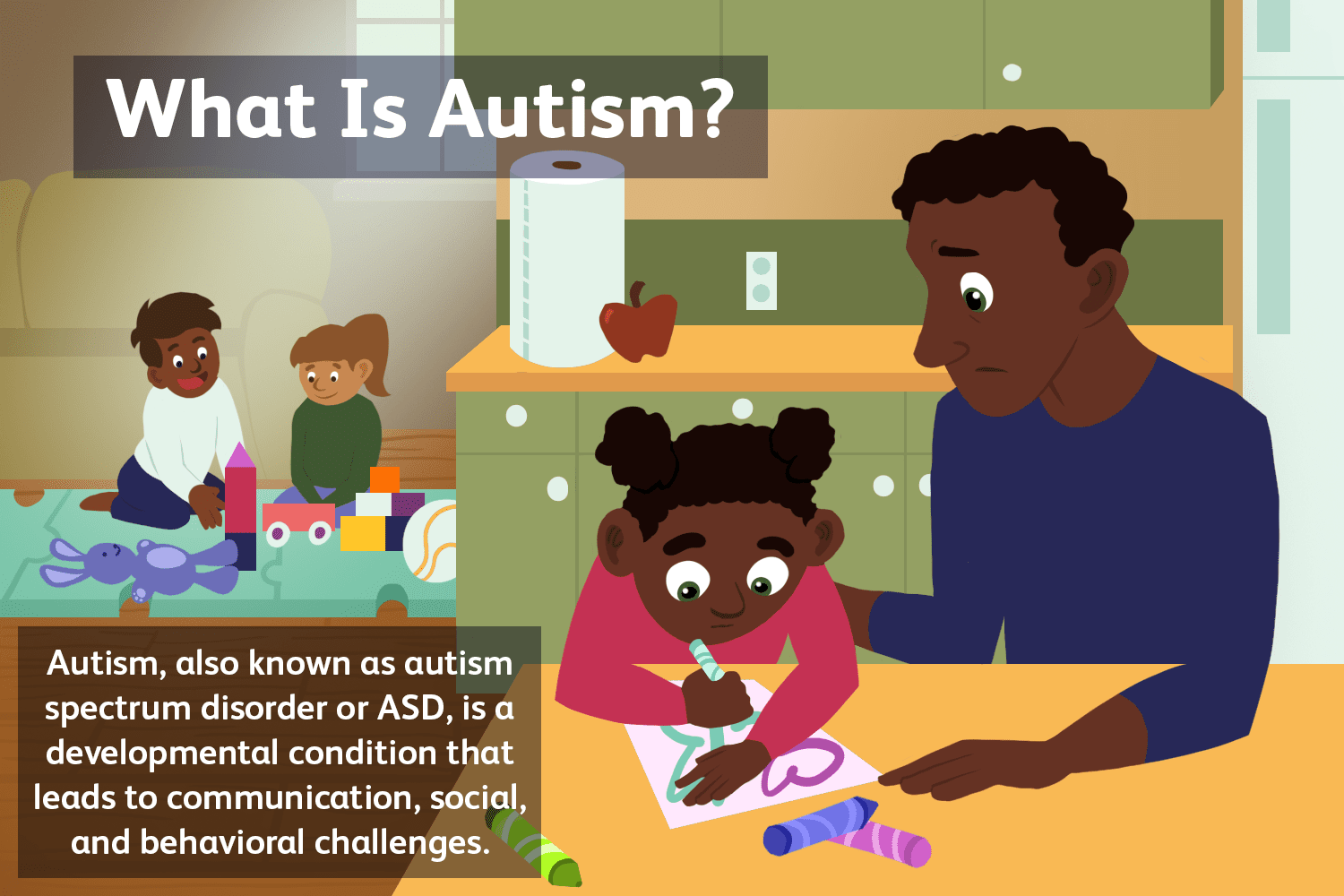Autism: Understand the Diagnosis
Are you or someone you know facing the diagnosis of Autism and overwhelmed by what it means? If so, you are not alone. Millions of people around the world receive an autism diagnosis every year. But understanding this complex condition is often confusing and intimidating for parents, caregivers, educators, healthcare professionals, and individuals on the spectrum themselves. In this blog post, we will explore a variety of topics related to autism so that we can deepen our knowledge about this poorly understood disorder to provide more effective support to those living with it.
Of all the difficult decisions parents face, understanding a child’s Autism diagnosis and navigating the existing road map of therapy support and education resources can be particularly daunting. Recognizing that many parents have lingering questions surrounding an Autism diagnosis, we offer these four guidelines to provide perspective on the process and implications:
First, it is essential to recognize that a single screener, whose expertise includes pediatric psychology, among other fields such as speech and language pathologists, neurologists, psychiatrists, and counselors, is responsible for upholding rigorous standards throughout the examination process for a diagnosis.
Second, this professional administers a number of formal tests such as assessment for clinical childhood autism rating scale + (CARS+) and family history questionnaires to accurately gather information about the individual’s background developmental history highlighter milestones achieved versus those falling behind from an expected evolution track.
Thirdly — after careful assessment and comprehensive diagnostic interview — external criteria guided by knowledgeable professionals with experience in psychological testing procedures establish whether an individual meets the criteria conducive to receiving an Autism diagnosis or not.
Lastly — when to comes this unique developmental disorder — helping patients maintain autonomy during rehabilitation is highlighted, changing past success rate stories into legendary accounts of hope in our modern-day community. We acknowledge what remains undeniably clear — each family carries its own individual styles and paths when it comes to their values through their journey themselves through an entire chapter of stabilization post assessment plus living out on consistent grounds with the outcomes post-appointment coexist provides.
Autism Spectrum Disorder (ASD) diagnostic criteria
Autism Spectrum Disorder, or ASD, is a condition that affects many individuals worldwide. The DSM-5 is a comprehensive manual compiled by experts in the field that provides criteria for diagnosing mental disorders. Mental health professionals will utilize this document to distinguish between various conditions, including Autism Spectrum Disorder. The guidelines in this manual are designed to help determine the presence and severity of symptoms, such as social communication difficulties and repetitive behaviors or interests. By using these criteria, mental health professionals can provide individuals with diagnoses and help them receive the appropriate care and support they need to thrive.
Parents: The diagnosis of Autism can be complex, and it’s essential to involve your child’s physician in the process. This ensures that physical and developmental disorders are ruled out as the cause of any concerning behavior issues. With a complete medical assessment, you can be confident that your child receives the proper diagnosis and treatment plan. Autism affects each child differently, and early detection and intervention can significantly improve their quality of life. So don’t hesitate to involve your child’s physician in the process to ensure the best possible outcome for your family.
- Social communication and interaction are crucial components of a healthy, functioning society. However, persistent deficits in these areas can make social situations challenging and overwhelming for some individuals. These deficits can manifest in various ways, such as difficulty with understanding social cues, trouble initiating or maintaining conversations, or struggles with empathy and perspective-taking. It’s important to note that these deficits aren’t just limited to one specific context but rather are present across multiple contexts. While these challenges can be difficult to navigate, it’s also important to recognize that support and resources are available for those who need them.
- Restricted, repetitive behavior patterns, interests, or activities can be seen in individuals diagnosed with an autism spectrum disorder. These patterns are characterized by a narrow focus on specific interests or routines, along with resistance to change or deviation from those interests or routines. Some common examples include repetitive movements or behaviors, such as rocking or hand-flapping, and an intense interest in a particular topic or object, such as trains or flags. It is important to note that these patterns may vary in severity and presentation between individuals, with some individuals exhibiting more subtle or sporadic patterns. In contrast, others may have more pronounced and consistent behaviors. Understanding and recognizing these patterns is crucial in diagnosing and supporting individuals with autism spectrum disorder.
- Symptoms in the early developmental period are crucial in understanding and diagnosing certain conditions. While these symptoms may not become fully manifest until social demands exceed limited capacities or may be masked by learned strategies in later life, their early presence can provide important clues to underlying issues. By paying close attention to the developmental trajectory of certain behaviors and abilities, clinicians and researchers can gain insight into the origins of various conditions and develop effective interventions that help individuals reach their full potential. While the complexities of these conditions may seem daunting, understanding their early manifestations is a critical step toward improving outcomes and promoting lifelong well-being.
- Regarding mental health conditions, symptoms can vary significantly from person to person. However, one common denominator among them is that they can often cause significant impairment in an individual’s daily life. The DSM-5, the manual used by mental health professionals to diagnose mental illnesses, specifies that in order for a symptom to be considered clinically significant, it must interfere with social, occupational, or other important areas of current functioning. While this can look different in each person’s life, it’s essential to recognize these symptoms’ impact and work to address them promptly and effectively.
- When diagnosing individuals with autism spectrum disorder and intellectual disability, it’s important to note that these two conditions often co-occur. However, it’s essential to ensure that social communication abilities are below the expected level for general development before making a co-morbid diagnosis. This is because individuals with intellectual disability may exhibit similar symptoms to those of autism spectrum disorder, such as social communication difficulties. Professionals must differentiate between the two conditions to provide the most appropriate and effective treatment. It’s worth noting that while these disturbances are not better explained by intellectual disability or global developmental delay, it’s crucial to assess both conditions when evaluating an individual’s overall development.
Note: For individuals who have received a DSM-IV diagnosis of autistic disorder, Asperger’s disorder, or pervasive developmental disorder not otherwise specified, a change is being made in regard to their diagnosis. It is recommended that they be diagnosed with autism spectrum disorder instead. This change is essential as it helps to recognize the wide range of symptoms and characteristics that individuals with autism may exhibit. Additionally, individuals who are experiencing marked deficits in social communication but do not meet the criteria for autism spectrum disorder should be evaluated for social (pragmatic) communication disorder. Individuals must receive the appropriate diagnosis for the best possible treatment and support.

The diagnosis is confirmed. Now what?
Parenting a child with Autism can be overwhelming, especially regarding learning strategies and treatments. However, seeking out a physician who is well-versed in treating Autism and who operates under the Medical Home Model can make all the difference. While recommendations for treatment will vary depending on your child’s age and specific behaviors, it is crucial always to remember that parents are an essential part of the treatment process. Remaining calm is critical, as becoming too emotional may make it more challenging to teach your child. Professionals can offer valuable support and guidance, so it’s important to seek out their help when needed. Ultimately, with a balanced approach and the right resources, parents can help their children thrive.
Early diagnosis of autism spectrum disorder is crucial for providing ample time to customize appropriate treatment for the child. Not only does this give parents more time to plan and learn about the disorder, but it also plays a large role in making the treatment a normal part of the child’s daily life. It is challenging to make corrections later on since children with autism spectrum disorder often struggle with change. Therefore, early intervention is key. Treatment methods can vary based on the child and their specific needs. However, a team approach with a physician using the Medical Home Model has proven to be the most effective in successfully treating children with autism. By diagnosing early and allowing for ample time for appropriate treatment, parents and professionals can work together to help children with ASD thrive.
The Medical Home Model is the perfect approach to treat children with Autism since it involves a group of professionals who collaborate to provide comprehensive care for the child. The model is based on the idea that the physician overseeing the child’s treatment is the primary contact overseeing the treatment’s progress. This approach may involve the participation of a mental health therapist, occupational therapists, and a nutritionist, if necessary, with the physician guiding the team. By intervening early in the formative years of the child’s life, the Medical Home Model proves to be an effective way to provide coordinated care that addresses all aspects of the child’s growth and development.
Early Interventions
For parents and professionals alike, there is nothing more important than understanding a child’s developmental needs and tailoring treatments to best address those needs. When it comes to Autism, early diagnosis can be crucial in providing the most effective interventions. A timely diagnosis gives parents and professionals the time they need to analyze the child’s unique strengths and weaknesses, customize treatments, and ensure that the treatment becomes an intimate and normalized aspect of daily life. As children with Autism often struggle with change, diagnosing early can enable parents and professionals to implement therapies early on and avoid much of the resistance that may develop in later stages of development. Overall, early intervention can come in many different forms, but the certainty is that early diagnosis is critical in laying the foundation for effective and successful treatment.
Dietary Interventions
Many parents of children with Autism have found that changing their child’s diet has improved behavior. However, parents must consult with their physicians before significantly altering their child’s diet. Autism helps for parents will vary depending on the child, and speaking with a physician who thoroughly understands your child’s medical needs is always recommended. Autism is a complex neurological disorder, and seeking guidance from trusted medical professionals can make a tremendous difference in your and your child’s quality of life.
Medical Interventions
When it comes to treating Autism, the medicine may not directly address the condition itself, but it can help alleviate certain behaviors commonly associated with it. However, parents need to weigh the potential benefits of medications against any short-term and long-term side effects that may come with them. For this reason, it’s crucial to ask physicians about the medication being prescribed, such as whether it’s a new drug or one that has been around for some time and what specific symptoms it aims to address. Additionally, parents may want to inquire about the medication’s history, including how long it was initially tested and the results of those studies. By doing so, parents can make informed decisions about their child’s treatment and ensure the best possible outcome.
A list of the most popular therapy approaches for ASD
Applied Behavioral Analysis (ABA): Applied Behavioral Analysis, or ABA, is a form of therapy designed to help better understand a person’s behavior. By breaking down tasks and looking at cause-and-effect relationships, ABA therapists can teach new behaviors and improve existing ones. Therapists use techniques such as arranging environment, modeling, prompting, corrective feedback, and pairing of reinforcers as part of their practice. It has been beneficial not only to children with autism spectrum disorder (ASD) and related disabilities but also to people with diverse behavioral issues, including anger management, OCD symptoms, and phobia. Thoroughly researched in hundreds of studies over the past few decades, there is no doubt that when done correctly, Applied Behavior Analysis practitioners like special education instructional supports are making a decisive shift in the lives of so many people who need it most.
Verbal Behavior (VB): Verbal Behavior, or VB, is a significant area of focus in the field of behavior analysis. This field examines and studies how language develops in an individual and how to systematically get individuals to acquire desired verbal behaviors. By looking at language as a series of learned behaviors, VB seeks to explain better why and how specific responses are elicited by different contexts. Depending on the specific type of communication being studied, sound production, communication through written text, interactive exchange between two individuals, or even environments might be taken into account, among others, by this form of behaviorism. Its areas of application span from educating autistic children, couples therapy, acquiring an additional language, and more. Ultimately, verbal behavior aims for individuals to engage successfully with their peers, whether in social communication, play skills, or academics.
Floortime: when parenting a child with autism spectrum disorder, works to encourage communication through play. It involves getting on your child’s level by joining them on the floor and actively engaging in imaginative games to help children progress from essential to complex interactions. Floortime alone isn’t enough; it offers the best results when strategic relationships are formed, which can be achieved alongside other behavioral therapies.
Similar studies have shown the advantages of using this approach; parents can slowly extend the time spent playing with their children and anticipate their needs by involving them in enjoyable activities, thereby providing room for growth into powerful one-on-one interactions.
Preventative Teaching and Autism
Children with Autism Spectrum Disorder may often find it challenging to cope with new situations. The changes in their routine can be overwhelming, leading to anxiety and frustration. However, preventive teaching can significantly reduce the stress your child may experience in such situations. Preparing your child for the upcoming change can be helpful not only for the child but also for you. By helping your child understand what’s coming, you can prevent unexpected meltdowns or blowups that could have easily been avoided. This technique has been shown to provide significant benefits to children with ASD and can create a more harmonious environment for both children and caregivers.
Tips for Autism Parenting:
1. Be Patient
One of the most important things you can do as an autism parent is to be patient. Autism can be a very frustrating condition for both children and adults, and it is essential to remember that your child is not acting out or misbehaving on purpose. It is also essential to be patient with yourself – parenting a child with autism can be challenging, and asking for help when needed is okay.
2. Be Consistent
Another essential tip for autism parenting is to be consistent. Children with autism often thrive on routine and predictability, so it is essential to establish a daily routine and stick to it as much as possible. This may mean setting a strict bedtime, having regular mealtimes, and participating in the same activities each day.
3. Use Visual Aids
Visual aids can be extremely helpful for children with autism. Many children with autism are visual learners, so using pictures or other visual aids can help them understand concepts they might otherwise struggle with. Visual aids can also be used to help children with autism stay on task and stay organized.
4. Encourage Communication
Some children with autism have difficulty communicating, but it is essential to encourage communication in whatever form it may take. This may include using sign language, picture cards, or other alternative communication methods. It is also essential to provide opportunities for your child to communicate, such as during mealtimes or while playing games.
5. Promote Social Interaction
Social interaction is an essential part of development for all children, but it can be incredibly challenging for children with autism. You can promote social interaction in many ways, such as joining a local support group, attending social skills classes, or arranging playdates with other families with children with autism.
6. Teach Life Skills
Many children with autism struggle with everyday tasks that most people take for granted, such as brushing their teeth or getting dressed. It is important to teach your child essential life skills so that they can live as independently as possible. Many resources are available to help you teach life skills, including books, websites, and videos.
Despite its complexities, understanding autism is incredibly important for enabling individuals on the spectrum to establish a meaningful and healthy life. Taking the time to understand autism, reading about research and therapy options, and reaching out for support can have extraordinary benefits in giving people with autism the beneficial opportunities they deserve. Autism is a multifaceted condition that can bring both challenges and incredible moments of joy along your journey. It’s essential to keep an open mind as you explore what an autism diagnosis means and find ways that make sense for you or your loved one. Remember, with determination, effort, and motivation, anyone facing an autism diagnosis has the power to gain strength from their individual traits—to live a purposeful life of happiness.
Contact us today at 816.819.5166 or schedule your appointment online.












